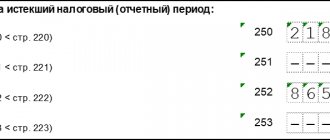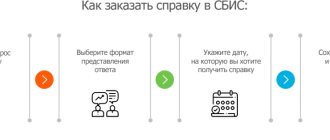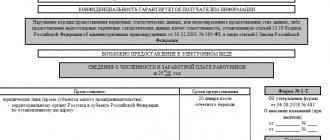New VAT agents
Among the changes in VAT from 2022, one can highlight the assignment of agent status for this tax in some new cases in which such requirements were not previously provided. Thus, according to the new paragraph 8 of Article 161 of the Tax Code, the duties of a tax agent will have to be performed by companies and individual entrepreneurs that purchase non-ferrous metal waste, scrap, secondary aluminum and its alloys, as well as raw animal skins on the territory of the Russian Federation.
As under previously existing rules, tax agents in the described situation will have to calculate and pay the appropriate amount of VAT to the budget, regardless of whether they are a VAT payer or not according to the applicable taxation system. But on the OSN it is still possible not to transfer the amount of tax or, at a minimum, to reduce it - if, at the same time as the agency VAT payable, the company or individual entrepreneur declares its right to deduction.
Along with the expansion of the list of tax agents for VAT, fresh changes in 2022 also clarify situations in which the status of a tax agent does not arise. This applies to subjects of the all-Russian payment system, as well as telecom operators specified in Law No. 161-FZ of June 27, 2011.
Are there government compensations for paying VAT?
Yes, there are many compensations, benefits and concessions for taxpayers in Russia. And for value added tax there is no exception.
In fact, the entrepreneur has the right to VAT compensation in order to avoid double taxation. Let's look at a specific example: an enterprise exported goods abroad. Moreover, it had already previously paid VAT for the purchase of raw materials to its supplier. Since when exporting goods the VAT rate is 0%, that is, the buyer of the goods cannot in any way “reimburse” the company for the amount of tax previously paid. In this case, the enterprise can count on compensation from the State.
Note! Only taxpayers working under the general tax system have the right to receive compensation. Entrepreneurs who use the simplified tax system, UTII, unified agricultural tax, and patent as a tax system, unfortunately, are deprived of this right.
The basis for receiving VAT compensation is the situation when
the amount of tax deductions of the taxpayer exceeds the total amount of tax at the end of the reporting period. The very fact of the presence of overpaid taxes must be indicated in the declaration. Compensation may be in the form of a credit or refund.
Three conditions must be met simultaneously in order for the VAT amount to be accepted as a deduction:
- The goods sold were already subject to VAT;
- All products undergo accounting and testing;
- The invoice was completed without a single error.
Need to know! Reimbursement of the amount of value added tax is of a declarative nature!
In order to exercise his right to compensation, the taxpayer must notify the tax authority in the form of an application. In order to consider the application, the tax agent must submit a package of necessary documents.
Details of tax refunds (all nuances, requirements and stages) are specified in Article No. 176 of the Tax Code of the Russian Federation.
Taxpayers have a choice in what form to receive a refund for their tax liability. You can submit an application for compensation in a standard form or in an accelerated form. In the standard version, after accepting the application, the tax expert examines the reporting and other documentation provided by the taxpayer, and, after 7 working days, makes a decision:
- On reimbursement of the full amount of tax claimed for reimbursement;
- On refusal to reimburse the full amount of tax claimed for reimbursement;
- On reimbursement of a partial amount of tax claimed for reimbursement;
- Refusal to partially reimburse the amount of tax claimed for reimbursement.
The tax inspector, who has made a decision to refund the VAT amount, sends an order to the Treasury to transfer the amount due within five days. VAT refunds are made using the details that the taxpayer indicated in his application.
Attention! If a taxpayer has arrears on tax obligations or arrears in repaying fines and tax penalties, then, in this case, if the decision on VAT compensation is positive, such a taxpayer is automatically transferred the amount of compensation to pay off his debts to the budget.
Zero VAT rate for re-export
Among the amendments to Chapter 21 of the Tax Code there is an innovation regarding a change in the VAT rate in 2022 to zero for goods exported as part of re-export. A zero rate will be applied if the goods must undergo certain customs procedures, namely processing in the customs territory, free customs zone and free warehouse. The zero rate must be confirmed by documents provided for in Article 165 of the Code: an original or a copy of a foreign trade contract, a customs declaration, as well as copies of transport and shipping certificates.
What to do before January 2022
There are a number of ordinary, but important things that an accountant needs to do before the beginning of 2022, so that there are no problems with either partners or the tax office.
Conduct an audit of contracts that were concluded in 2022 (or earlier) and continue to be valid in 2022. Together with the director, agree with business partners at whose expense the difference arising from the tax increase will be covered. Draw up and sign additional agreements to contracts regarding the cost of goods, works, and services. Or terminate previously concluded contracts and sign new ones with a VAT rate of 20 percent.
Don’t forget to determine in advance how to organize the company’s document flow if the partners cover the difference arising from the VAT increase at their own expense. You can issue a correction invoice or another advance invoice.
Retail companies need to remember to update their online checkout software. When selling goods in 2022 that will be shipped in 2022, VAT of 20 percent must be indicated on receipts. And, of course, update the accounting software to take into account the new VAT rate.
More about zero rates
An additional change in the payment of VAT from 2022 at a zero rate is the possibility of not officially applying the export exemption. The opportunity to waive the 0% VAT rate applies to the export of goods or their transportation.
A waiver of the zero rate is possible for all export transactions as a whole, provided that an application is submitted to the Federal Tax Service no later than the 1st day of the quarter from which the taxpayer plans to pay VAT at the regular rate. The total period of refusal is no less than a year.
The meaning of such a waiver of the zero rate comes down to the possibility of deducting VAT billed at rates of 18% or 10% by those suppliers who, having the right to a zero rate, do not want to confirm it, as a result highlighting the regular tax in invoices. This situation can be seen quite often in relations with Russian international carrier companies. Their services are subject to VAT at a zero rate, but this requires confirmation. Until now, if the invoice of such a company indicated VAT of 18% instead of zero VAT, controllers recognized this rate as incorrect (letter of the Federal Tax Service of Russia dated July 7, 2016 No. SA-4-7 / [email protected] ), and with The judges were in agreement with them (decision of the Supreme Court of the Russian Federation of January 26, 2016 No. 304-KG15-18260). Accordingly, it was unlawful to deduct VAT on such a document. But the described amendment to Chapter 21, which provides changes in the payment of VAT in 2018 at a zero rate, as well as the possibility of abandoning it, should eliminate this problem.
Electronic services
Currently, when providing electronic services, foreign organizations calculate VAT only if the buyer of the services is an individual.
If the counterparty is a legal entity or individual entrepreneur, they act as a tax agent and withhold VAT when transferring payment under the agreement to a foreign person.
From January 1, 2022, the responsibility for calculating VAT will be assigned to a foreign organization providing electronic services, regardless of who the buyer is. (Federal Law No. 335-FZ dated November 27, 2017).
Zero VAT for postal items abroad
An important amendment regarding the possibility of applying a zero rate for postal items abroad will be relevant primarily for online stores that sell their goods to foreign buyers. The fact is that such sellers have the right to a zero VAT rate, but are also required to confirm it. The current version of the Tax Code does not contain a clear list of documents that the seller must collect in this situation. As a result, most VAT payers still pay tax on such transactions at the standard 18 percent rate. Changes to VAT from 2022 are intended to resolve this issue.
It will be possible to confirm the zero rate for postal items using the established list of documents: payment slips, a declaration in the CN 23 form or a customs declaration (new subparagraph 7, paragraph 1, article 165 of the Tax Code of the Russian Federation).
Agricultural producers will pay VAT
Organizations and entrepreneurs paying the Unified Agricultural Tax are not VAT payers (with the exception of payment of VAT on imports, as well as in accordance with Article 174.1 of the Tax Code of the Russian Federation under a simple partnership agreement, etc.). From 01/01/2018
this list of exceptions was supplemented by transactions listed in Article 161 of the Tax Code of the Russian Federation, for which VAT is paid by the tax agent (clause 57 of Article 2 of Law No. 335-FZ). Thus, if the Unified Agricultural Tax payer carries out the operations listed in Article 161 of the Tax Code of the Russian Federation, then the tax agent will pay VAT on them. As a rule, this is the buyer.
In addition, from 01/01/2019
Payers of Unified Agricultural Tax will be recognized as payers of VAT (clause 12 of Article 9 of Law No. 335-FZ). This means that they will pay VAT on all taxable transactions. But the legislator softened the transition to paying VAT, providing for them an exemption from VAT according to the new rules of Article 145 of the Tax Code of the Russian Federation. From 01/01/2019, the Unified Agricultural Tax payer will be able to receive an exemption from VAT if (clause “a”, paragraph 1, article 2 of Law No. 335-FZ):
- in the same calendar year switches to paying the Unified Agricultural Tax;
- or for the previous tax period (calendar year) under the Unified Agricultural Tax, the amount of income from the sale of goods (work, services) under a given taxation regime excluding tax did not exceed in aggregate:
— for 2022 — 100 million rubles. — for 2022 — 90 million rubles. — for 2020 — 80 million rubles. — for 2022 — 70 million rubles. — for 2022 and subsequent years — 60 million rubles.
To obtain an exemption, the taxpayer must submit a written notification to the tax authority at the place of registration. This must be done before the 20th day of the month from which it is planned to use the VAT exemption.
The right to release is lost from the 1st day of the month in which:
- the amount of income from the sale of goods within the tax period on the Unified Agricultural Tax exceeded the established limit (given above);
- sales of excisable goods are carried out.
In this case, the VAT amount for the specified month must be restored to the budget. Please note: if the Unified Agricultural Tax payer has lost the right to VAT exemption, he will no longer be able to use it again.
The new five percent rule
Currently, paragraph 4 of Article 170 of the Tax Code requires separate accounting of input VAT on the acquisition of goods, works or services that are used in taxable and non-taxable activities. At the same time, the taxpayer has the right not to comply with this rule, that is, not to keep separate records of transactions, if the share of costs allocated to operations not subject to value added tax does not exceed 5% of the total amount of expenses. All VAT charged by suppliers is simply accepted for deduction.
With the introduction of new amendments, the situation with such leading VAT will change from 2022. The right to deduct the entire amount of input VAT, subject to the 5 percent limit, will remain, but you will still have to keep separate records of taxable and non-taxable transactions.
History of the formation of value added tax
In Russia, VAT was preceded by a “turnover tax” that was in effect for almost 70 years. One of the prerequisites for the emergence of a sales tax in the distant post-war period was an acute shortage of funds from the state treasury. It was very difficult for merchants under this taxation, because the tax was levied on all revenue, and not on net profit.
Value added tax came into force in Russia on January 1, 1992. However, other countries have long practiced this type of tax. The founder of the VAT is considered to be the French Director of the Ministry of Economy, Finance and Industry, Maurice Loret. The tax began testing in France in 1954. After positive tests, the project tax was found to be effective, and 4 years later, it was officially introduced into the taxation system.
Today, value added tax is in force in almost 140 developed countries. Each country independently sets value added tax rates and regulates exemptions and exceptions for its payment. The average VAT rate around the world varies around 20%.
In the Russian Federation the rate is set at 18%. An identical rate applies in Malta, Azerbaijan, Georgia, Macedonia, Peru and Turkey.
In Mexico the value added tax rate is slightly lower – 16%, in Germany – slightly higher – 19%. In India, the standard VAT rate is quite low, at 12.5%, and 2 out of 28 states are generally exempt from paying value added tax.
In some countries there is no VAT at all. For example, in Japan and the USA, sales tax is used instead of VAT. In the USA, the sales tax rate is not fixed and varies from 0 to 20% (depending on the state). There are also exceptions and exemptions for this tax in the USA. But in Japan the rate is fixed and unchanged, it is only 8%.
Tax Free Amendment
Foreigners who purchased various goods or souvenirs while traveling around Russia still could not claim the right to a VAT refund, the so-called Tax Free, which is widely known and used in a similar situation by Russians coming from abroad. Changes to VAT from January 1, 2022 will eliminate this injustice. A new article 169.1 of the Tax Code has been introduced, establishing the procedure for tax refunds for citizens of countries not belonging to the EAEU customs union.
Thus, those tourists who, within one calendar day, purchased goods in the territory of the Russian Federation worth at least 10 thousand rubles, including tax, will be able to claim a VAT refund. In this case, it will be possible to return the tax through a special operator at the airport - by bank transfer or in cash.
Sellers who participate in this scheme, subject to a number of conditions, will be able to deduct VAT that was returned to foreigners. The right to deduction in such a situation can be used within one year from the moment when the foreign buyer was compensated for the tax.
Changes in air transportation and airport services
Subclause 22 of clause 2 of Article 149 of the Tax Code of the Russian Federation exempts from VAT aircraft maintenance services that are performed at airports and in Russian airspace. However, there is no indication of specific types of services in the Code. From January 1, 2022, the Government has the right to determine such services ; it must formalize their list in a separate document.
In addition, a zero VAT rate has been introduced for domestic air transportation of passengers and baggage in the Kaliningrad region since the beginning of this year.
VAT rate change in 2022
Summarizing all of the above, it can be noted that there are really a lot of changes planned for VAT this year. The most significant and relevant of them are described above. However, the main innovation, which was expected around the summer-autumn of 2022, will not happen yet.
We are talking about changing the VAT rate in 2022, or more precisely about its increase from the standard 18% to 22%. The fact is that such projects were considered at the level of discussions of such departments as the Ministry of Finance, the Ministry of Economic Development and the Chamber of Commerce and Industry. It was planned to simultaneously change the rates of several main taxes: an increase in the VAT rate to 21-22%, for personal income tax - from 13% to 15% and a simultaneous significant reduction in the general rate of insurance premiums, to the same 22%.
Well, probably officials could not come to a consensus regarding the further development of the tax system of our country.
But one thing can be said with confidence: such changes should still be expected, if not next year, then in the near future. You can find more complete information on the topic in ConsultantPlus. Free trial access to the system for 2 days.
Tax on invoice
When filling out an invoice, you must indicate two values:
- the total cost of goods or services;
- the required VAT rate in Russia.
If we are talking about rates of 0, 10 and 18 percent, then column No. 7 is filled out in this document. When we are dealing with calculated rates of 10/110 and 18/118, the fifth column is intended for them (see the figure below). It is only important to take into account that in the last two cases, the full amount must be indicated in the “Cost of goods and services” column. And depending on the specified rate, inspectors will understand whether it includes VAT or whether it has yet to be calculated.



